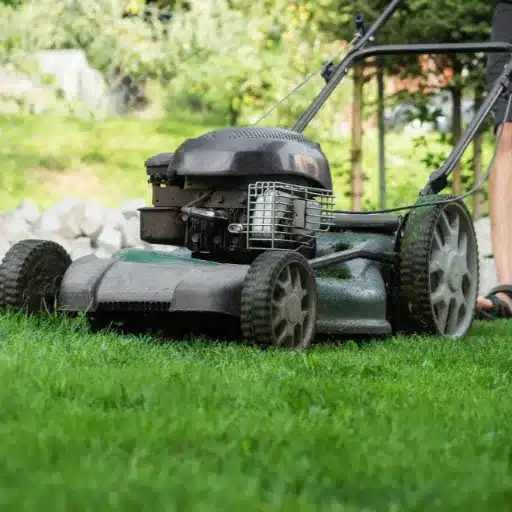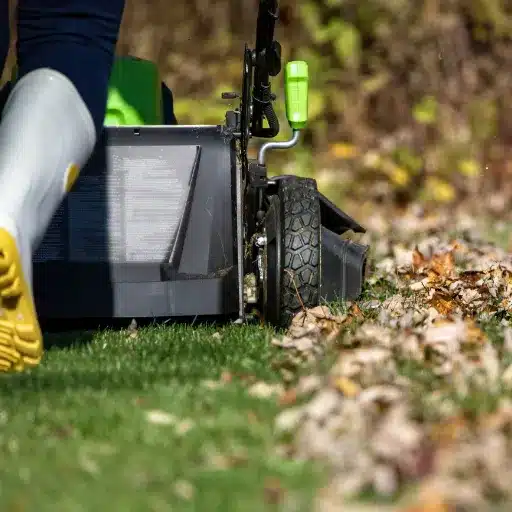Embroidery is one of the oldest crafts that requires both creative and practical skills, and it is suitable and enjoyable for different enthusiasts. Finding appropriate handheld work embroidery tools for those new to this field can be challenging because of the wide variety of alternatives. This blog will be helpful for beginners as it will help them focus on some manufacturers and features that matter before making their first purchase of an embroidery machine. We will also see, among other features, the machine interfaces, designs built into the machine, and the scope of operations so that new embroiderers do not make mistakes by buying machines out of their skill level. It does not matter if you seek to enhance your ordinary projects with embroidered designs or want to construct a business in the embroidery industry; every step will be helpful and contains practical suggestions.
What is the Best Embroidery Machine for Beginners?
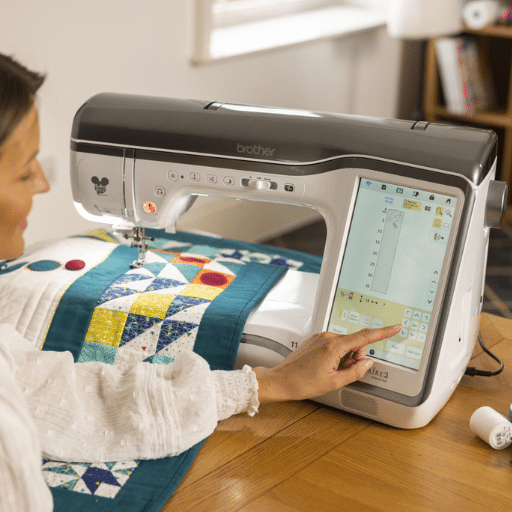
The Brother PE800 is often considered and recommended as one of the first embroidery machines for starters. This is because it is easy to operate, and its large LCD screen is a touch screen that allows the user to scroll through different options or designs to be used quickly. It also has 138 decorative stitches and 11 font styles, so beginners don’t have to purchase additional programs immediately. Moreover, Brother PE800 has an embroidery area of 5” x 7”, which can hold more significant designs and comes in handy when working on different projects. It also has the option of a USB port so its designs can be imported, which increases the machine’s flexibility as skills improve. The machine has an excellent reputation for being dependable and friendly with the users, which is great for first-timers in embroidery.
What Features Should You Look for in a Beginner Embroidery Machine?
First-time buyers need to consider some features in a beginner embroidery machine to make sure they can handle it with ease and have the ability to perform a range of functions. Of course, the interface must be easy to understand for novices – usually, it is an interactive touchscreen that makes design selection and editing simple. Moreover, it is okay if beginner users have a couple of built-in designs and fonts because they do not have to look for additional designs on their external software. For starters, a sewing area of at least 5″ x 7″ allows users to tackle monograms and other broad patterns as well. Buying a USB-compatible design is essential to use new designs as one’s skills improve. Thankfully, these features, along with a one-step needle threader or a jam-proof bobbin prefilled, will help deal with the frustrations of beginners by making the experience a lot more seamless. Finally, as you get used to your new machine, you’ll appreciate its comprehensive and reliable customer support and educational resources.
How Does a Beginner Embroidery Machine Differ from a Sewing Machine?
The end purpose of the beginners’ embroidery machine sets them apart from a typical sewing machine. It is also necessary to note that while sewing machines aid in constructing clothes, repairing, and performing simple stitching, embroidery machines let you have unique patterns and designs on the fabric. One of the most predominant distinctions is the fact that such devices as embroidery machines have an embroidery field of at least five inches by seven inches in size so that intricate designs can be featured. This is, however, not the case with sewing machines. It is also worth mentioning that embroidery machines can be equipped with numerous design libraries as well as a USB port for custom designs, which is not a feature of conventional sewing machines. These are also fitted with special needles and hoops to hold the fabrics in position during the embroidery. In their technical description, embroidery machines almost always feature adjustable stitch speed, automatic thread tension, and compatibility with several embroidery feet, allowing the user to perform delicate work. Instead, a typical sewing machine is given lower preference for stitch patterns incorporated, buttonhole, and alterations pressure because its standard functions are clothing and hemming tasks.
Which Brands Offer the Best Embroidery Machines for Beginners?
The top embroidery machine for beginners varies from one brand to another. When crafting top-notch embroidery machines, few brands match Brother precisely because of their user-friendly models, like the Brother SE600, which features a touchscreen, 4 × 4 embroidery field, and tutorials. Another renowned manufacturer is Janome, which can provide high-quality engineering and long-lasting machines. For example, the Janome Memory Craft 400E has a great embroidery field, built-in designs, and adjustable embroidery speed. Finally, versatile options are available in Singer, such as the Futura XL-400, which has an extra large sewing area, 125 built-in embroidery designs, and SwiftSmart threading technology. Usually, these machines come with even more advanced features like automatic needle threading, USB design uploading, and adjustable speed to help make the experience even more accessible for the novice.
How to Choose Your First Embroidery Machine?
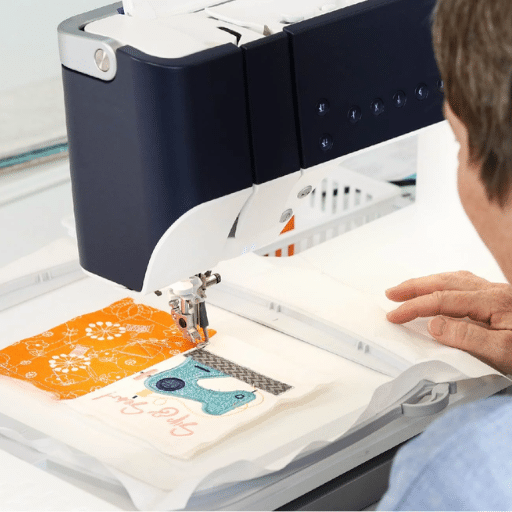
You need to consider many things regarding your skill level and requirements before deciding on a specific embroidery machine. Determine the size of the available embroidery field first. A larger area may allow for more complexity in the designs. Consider using machines with a built-in guide and different interfaces, such as touchscreens, which are easier to learn. Think of the various options for stitch types and built-in designs. In addition, the machine’s ability to import designs digitally should be considered. You may be able to create more designs. Lastly, be mindful of your finances and the need to purchase a quality machine if you want your embroidery experience to be worthwhile.
What is the Right Embroidery Machine for Your Needs?
When selecting an embroidery machine, your decision will be based on the cost, features you would like, and what you would like to do with the machine. Most recommended beginner machines are, for instance, Brother PE800, which gets a lot of praise for its large 5”x7” inches embroidery area and its variety of 138 built-in designs that also come with supportive tutorials to ease the learning process. The other options available are, for example, the Janome Memory Craft 400E, preferred by users who want to work with a more extensive embroidery area and different speeds for different types of projects. If you are tech-savvy and want to combine your sewing with embroidery, the Singer Futura XL-580 will cover all your needs with its wide range of 250 designs and computer system that is easy to operate. Looking into the fact that the machine’s design is versatile, its user-friendliness and its lifespan will also inform your purchase decision to meet your creative needs.
Should You Buy a Multi-Needle or a Single-Needle Machine?
If you have multi-needle and single-needle embroidery machines, assess their differences regarding the project scale, personal skills, and production required. The single-needle machine is less complex because it requires less experience and is therefore advantageous to beginners or hobbyists, as it is cost-effective. Generally, it comprises a single head and can attain about 400-800 stitches per minute, making it suitable for personal and straightforward projects.
On the contrary, a multi-need machine is ideal for more intricate work, especially for commercial activities. Utilizing multiple needles, usually 4, 6, or even 10, allows different colors of thread to be used simultaneously, drastically cutting down design completion time. Multi-needle machines can operate at up to 1,000 stitches per minute or more and can directly cut the turnaround time for more oversized orders as they improve production efficiency.
Pick a single needle for monotonous tasks requiring focus on individual projects and gaining experience in practice and creativity quickly. Go for a multi-need machine if you are looking for fast stitches, high production rates, and complex designs, as it will suit business and advanced crafting needs.
How Important is the Size of the Embroidery Field?
One of the most crucial aspects to consider when getting an embroidery machine is the size of the area/field within which the embroiders’ work will be carried. The available field dimensions determine the work undertaken since the size is more significant. Fewer designs need to be re-hooped, which increases efficiency since the possibility of the design going off-center is reduced. For home users, a field size up to about 4×4 inches or up to 6×10 inches is standard, and these serve most home users’ requirements in the project. However, machines with a field size of twelve by eight inches and above come in handy when it comes to commercial purposes or broader designs. Large areas allow the designer to use a more sophisticated machine with a more complex design and many stitches that improve creativity and efficiency in production. Thus, think carefully about what design you plan to work on design areas- smaller ones may create design limitations, and larger ones may lead to overinvestment. Evaluating the space available for dealing with the different types of projects will lead to the most optimal one.
What are the Advantages of Using an Embroidery Machine?
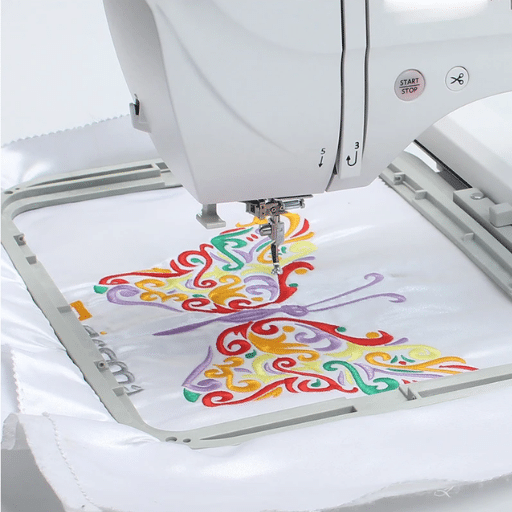
There are multiple benefits to using embroidery machines that can improve crafting and are suitable for business purposes. First, embroidery machines can create even stitches, guaranteeing quality results. This standard can be complex to maintain when using hand embroidery, especially when the scope of hand embroidery is complex or has large patterns. Another benefit is that these machines save the user a lot of time when completing such tasks, allowing for the mass production of pieces. Furthermore, these embroidery machines allow for multiple designs since they have built-in designs and allow the importation of different patterns. In addition, most of the work is done by embroidery machines, which minimize the physical stress levels and enable other users to use them. In conclusion, the embroidery machine makes the whole process easy, expands the range of design, and, most importantly, ensures the desired output of an explained level of detail and professionalism.
How Can an Embroidery Machine Enhance Your Sewing Projects?
Using an embroidery machine will cause a drastic change in how your sewing or stitching projects will appear. They are ideal for complicated embroidery that would be difficult to do by hand and include many templates to choose from or modify to reach new heights of imagination. These devices help to maintain synchronization and accuracy in the designs across multiple pieces. They make the embroidery work more manageable, increasing production speed and enabling more projects to be accomplished within the set time. Therefore, the end product is visually appealing and made faster, making it ideal for individuals and businesses.
What Types of Embroidery Patterns Can You Create?
Machine embroidery can be used in many ways since it has many possible traditional or modern designs. Monograms, famous initials used on clothing and linens for customization or gift purposes, can be designed. Floral designs can be used to embellish fabrics to enhance their beauty. Such designs can be used on dresses and various fiber accessories to improve the beauty of household decorations. Geometric or abstract patterns have a more contemporary feel, allowing multiple materials to be creatively adorned.
Further, company logos and signs can be produced by machines that are suitable for commercial use. In addition to the large variety of designs and patterns, clothes also have seasonal cultural and artistic designs readily available to customers. The wide variety of embroidery patterns will help users quickly create complex and unique pieces.
Are Built-in Embroidery Designs Worth It?
Novice and seasoned users benefit significantly from built-in embroidery designs because they offer ready-made patterns instead of making any design from scratch. As a rule, these patterns have a great variety of styles so that one can always commence any embroidery work quickly and without much hassle. The machine usually has predetermined patterns that are adapted to the machine’s technical specifications, guaranteeing high-end quality with the least possibility of making modifications. Critical technical dimensions to be considered are mainly the stitch density, which ensures that the features are not too spaced out nor too tight, and the stitch type, which gives the texture and finish of the embroidery. Such machines might also specify maximum design sizes and the supported file types, such as PES or DST, of additional designs so that integration is done quickly. By using these pre-installed designs, a user does not have to spend time and effort looking for them; hence, the need for built-in embroidery designs is justifiable for enhancing creativity and efficiency.
What are the Best Embroidery Machines for Beginners?
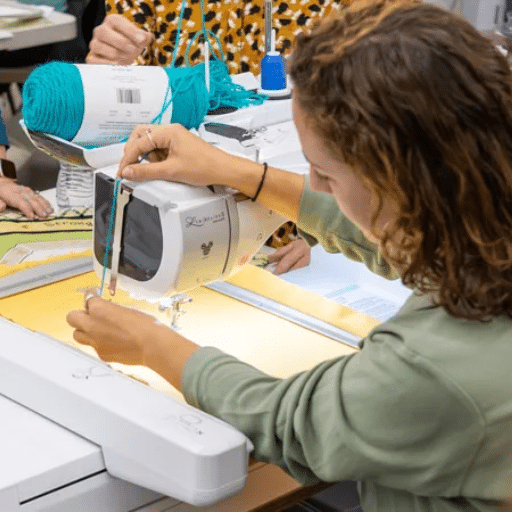
When buying an embroidery machine for the first time, it is essential to look at features such as usability, price, and other features included with the machine. One product that gets great reviews is the Brother PE800, which allows users to design and position their embroidery using a large color touchscreen that is easy to navigate. The possibilities are only limited by the number of built-in designs or USB imports that the machine has. The Singer Quantum Stylist 9960 is another great option; its excellent range of automatic functions means it performs well at a reasonable price, which is ideal for beginners in embroidery machines. Lastly, the Janome Memory Craft 230E is another good buy with dedicated designs programmed into it, making it perfect for beginners who want a quick and easy user experience. These models effectively combine performance and simplicity, making the transition between the machine and embroidery easy for beginners.
Best Embroidery Machines Reviewed
Turning to an investigation of the most suitable embroidery machines for beginners, the following three models received a similar mention on a number of the rated sites: Brother PE800, Singer Quantum Stylist 9960, and Janome Memory Craft 230E. The main advantage of Brother PE800, which is highly appreciated by many, is that it is an easy-to-use screen with an available color touchscreen with high-definition resolution to assist with making good design changes and additional designs or patterns through a USB interface. Most see it as a decent and dependable tool thanks to Its versatility and understanding of the design library, which helps streamline even the most challenging tasks.
The Singer Quantum Stylist 9960 is often in the limelight due to its low-cost offering. It combines several automated functions that reduce the effort required to execute embroidery tasks for beginners. The automatic thread cutter and 600 built-in stitches are some of its advantages, which also provide increased efficiency and creativity without staggering the user.
The other model, the Janome Memory Craft 230E, is noted for its small and lightweight nature, which complements the ease of operation. It has many built-in designs with decent editing functions on the LCD screen, which is ideal for beginners on the embroidery journey. While all these models have their own features, they effectively perform the most basic function of embroidery — no frills, no complexities, just ease of use, which is excellent for beginners.
What Makes the Janome Memory Craft a Great Option?
The Janome Memory Craft 230E is a perfect choice for beginner users looking for an easy-to-use machine that does not consume a lot of space. What strikes one most about this compact embroidery machine is its ease of use. Construction of the machine may be pretty basic, but it is designed in such a way that it is suitable for most embroidery projects that measure 5×5 inches. The LCD screen on the machine effectively guides users and allows for some level of design modification. Moreover, for beginners who want to try their skill on patterns without any danger of making a mess, the Janome Memory Craft 230E comes with automatic thread tension, an easy threading system, and a built-in design. Overall, the feeling is that this model is designed for ease of use, which would be perfect for beginner embroidery enthusiasts.
Why is the Brother Embroidery Machine Popular Among Beginners?
The Brother Embroidery Machine is popular with those looking to start embroidery mainly due to its cost-effective price, ease with which it can be operated, and numerous features. To begin with, it is priced reasonably, making it an ideal buy for people just starting out in embroidery. They usually have bilingual instructions in their packages and simple interfaces that make learning easier. In addition, Brother machines generally offer a variety of integrated patterns, with some having a maximum of 80 for specific models, such as the Brother SE600, which allows users to express themselves creatively without spending much. Such models also have advanced features such as automatic needle threading and thread cutting functions, which make the operation easy. The most commonly sold brands have the exact technical specifications, which include a 4×4 inch maximum embroidery area, design import cut-in USB ports, and touchscreen LCDs for easy design editing and navigation. Such features enhance the affordability of the machine, making it the most suitable machine for beginners wishing to engage in embroidery as it is quite inexpensive and efficient.
How to Start Your Embroidery Journey with a Beginner Machine?

Beginning your journey practicing Embroidery with a beginner’s machine can be easy when you understand and follow a few simple steps. To start, thoroughly read the clothing embroidery machine manual that comes with the machine to learn its functions and how to operate it properly. The next thing to remember is that it is essential to prepare the machine properly, including correctly threading the machine and matching the needle and thread to the type of fabric you are working with. We advise you to start practicing with straightforward designs found in the machine, such as patterns or basic shapes, to get used to the machine. Try new materials and Stabilizers and see what they do to the embroidery to try and match styles with techniques. While gaining confidence, you can also try expanding your designs by uploading your own through the USB connection on your machine or through design software. Also, help and inspiration in gaining experiences can be drawn from online discussion websites and various embroidery societies. It simplifies processes, and hand-eye coordination is improved step by step from the strokes made.
What Basic Supplies Do You Need for Machine Embroidery?
As an embroidery machine enthusiast would know, getting started on machine embroidery projects requires several supplies as a starting point for putting stitches successfully. The choice of embroidery threads would be wise as they are more durable and flexible than regular sewing thread, and thus, they can be used to ensure the designs are bright and long-lasting. Different stabilizers must be included, including tear-away and other types like cut-away and wash-away that prevent fabric distortion when the actual embroidery is done. It’s also good practice to use a good pair of sharp embroidery scissors to avoid threads hanging all over. Moreover, it is critical to have machine embroidery needles on hand that must be replaced frequently to ensure clean stitches and can withstand the wear and tear of the embroidery process. Another tool that is needed is hoops, which hold or anchor the fabrics when stitching. Also, some marking tools, like water pens, can assist in accurately reproducing patterns and positioning. The advice above is acceptable to get beginners going, but as one desires to be more intricate and personalized in his/her projects, he/she should look for more tools.
How to Use an Embroidery Machine for the First Time?
To use an embroidery machine for the first time, begin by thoroughly reading the machine’s manual, which is indispensable for understanding its specific features and setup. First, ensure your machine is correctly threaded, following the threading path outlined in the manual. Attach the correct embroidery hoop to your machine, keeping the fabric taut and stabilized with an appropriate stabilizer underneath. Next, select a simple design preloaded in the machine or upload one using a USB drive or software. Before starting, adjust the machine’s settings, such as stitch length and speed, to suit your project. When you initiate the embroidery process, keep an eye on the machine to promptly address any issues, like thread breaks or needle problems. Most importantly, practice on scrap fabric to familiarize yourself with navigating designs and machine operations without risking your main projects. As you gain confidence, experiment with more complex designs, colors, and stitch patterns to hone your skills further.
What are Some Easy Embroidery Projects for Beginners?
Selecting easy projects can help build skills and confidence when starting with embroidery. One popular project is creating embroidered patches. These are small, allowing you to practice different stitches and easy to attach to items like backpacks or hats. Another beginner-friendly option is creating monogrammed towels or pillowcases. These projects offer simple designs and provide an opportunity to practice consistency in stitching. Additionally, embellishing plain tote bags with floral or geometric patterns is a great way to apply basic stitches and have a functional finished product. Each project enables beginners to explore embroidery’s creative possibilities without overwhelming them with intricate designs.
What Mistakes Should Beginners Avoid When Using an Embroidery Machine?
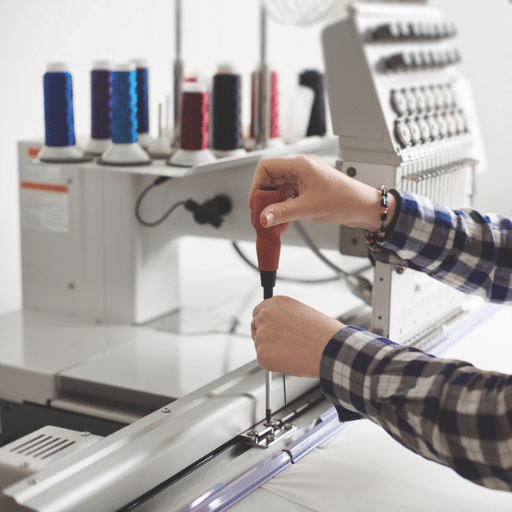
To enjoy using the embroidery machine and see good results, beginners need to avoid a few common flaws. The first flaw is the use of wrong or cheap threads that lead to breakages and bad outcomes. The second flaw is poor hooping, whereby a fabric is not stretched firmly enough to stop movement and distortion of the embroidery design. Also, the absence of routine upkeep, such as dusting the machine’s lint and oiling parts when necessary, leads to functional failure. The last fault is the tendency to overstretch the tasks: this is not the right thing to do because the process of machine adjustment, the inner side of the back, the outer side, fixing any area and areas of the stitching caused cute decor in the design should be followed if this is to be aimed at forging on with exemplary works.
How to Prevent Common Embroidery Errors?
Avoiding basic mistakes in embroidery requires preparation and systematic work. First, use good quality threads, as poor threads will lead to breakage and easy wear and tear of the stitches. Hooping has to be done correctly; make sure the fabric is drum-tight and flat, and use an aegis to help support the fabric in its place during the embroidery. Machine upkeep is periodic; do not allow too much dust to build up on the machine, and lubricate the appliances when necessary to stop impediments. Do not cut corners; each job should be methodically prepared and implemented with care, particularly the design position and the type of fabric used. Also, operating a sample stitch on redundant parts of the fabric can avoid possible unwanted factors, ensuring the end product is presentable and well done.
What Should You Know About Maintenance and Care?
When handling an embroidery machine, adhering to some maintenance procedures is essential to prolong its lifetime. One must do regular cleaning regularly, check how much lint has accumulated in the bobbin area and other thread paths, and take action. This does not pose a problem if a person has a small implement like a brush, although a delicate machine-cleaning vacuum attachment can serve the purpose better. Moreover, oiling the machine is also an important activity. A person should check the manual schematic to see which components require lubrication and how much time should elapse between the applications. As a general rule of thumb, oil any metal parts that come into contact with each other during operation and movement. It is suggested that only genuine sewing machine oil be used, without substitutes that would negatively harm the machine. At any rate, when not in use, make sure that the machine is covered to avoid dust settling. Finally, even if everything seems alright from a machine performance perspective, book an appointment for a machine service check-up at least once a year to cover any probable problems lurking. By following these measures, you can prevent yourself from incurring losses because of a malfunctioning embroidery machine shortly.
How to Troubleshoot Common Issues with Your Embroidery Machine?
Embroidery machines occasionally encounter issues that can interrupt your projects. Here are some common problems and solutions:
- Thread Breakage: This is often caused by incorrect thread tension. Check your machine’s tension setting and adjust it according to the manufacturer’s guidelines. Additionally, ensure that the thread is correctly placed in the spool. Using a high-quality thread can also prevent breakage.
- Skipped Stitches: Skipped stitches can occur if the needle is dull or bent. Replace the needle with a new one appropriate for the fabric type. Ensure the needle is correctly installed, with the flat side facing the right direction. Verify that the fabric is hooped correctly and is stable.
- Fabric Malfunction or Distortion: Improper hooping can shift fabric, resulting in distorted designs. Always ensure the fabric is taut in the hoop without stretching it. Using stabilizers appropriate for the fabric type can also help maintain integrity.
- Bobbin Issues: If the bobbin thread is visible on the top, the bobbin tension might be the culprit. Refer to your manual to adjust the bobbin tension. Ensure the bobbin is wound evenly; uneven winding can cause inconsistency in stitching.
- Machine Stopping Unexpectedly: This can happen due to a buildup of lint or thread in the machine parts. Regularly clean the bobbin area and thread path. Furthermore, if the E-error message appears, it often signals a mechanical jam or part obstruction—check that nothing is tangled or blocking the movement.
By closely following these troubleshooting steps and referring to your machine’s manual when necessary, you can efficiently resolve most issues and keep your embroidery projects running smoothly. Regular maintenance is vital in minimizing these problems.
References
Frequently Asked Questions (FAQ)
Q: What should I consider when buying an embroidery machine as a beginner?
A: When buying an embroidery machine, consider factors such as ease of use, the size of the embroidery area, and whether you want a sewing and embroidery machine or an embroidery only machine. Look for machines that are ideal for beginners and offer user-friendly features.
Q: Can I use a sewing and embroidery machine for embroidery only tasks?
A: A sewing and embroidery machine can only be used for embroidery tasks. However, if you focus solely on embroidery, you might prefer a dedicated machine designed explicitly for that purpose.
Q: What is the ideal embroidery area size for beginners?
A: The ideal embroidery area size for beginners varies, but a machine with a maximum embroidery area of at least 4×4 inches is recommended. This allows for a variety of projects without being overwhelming.
Q: Are there affordable embroidery machines that are great for beginners?
A: Yes, many affordable embroidery machines are great for beginners. Look for models that offer ease of use and essential embroidery capabilities without breaking the bank.
Q: What features should I look for in a new embroidery machine?
A: When choosing the proper embroidery machine, look for features such as built-in designs, easy threading, a large embroidery hoop, and a user-friendly interface. These features can significantly enhance your embroidery experience.
Q: What multi-needle embroidery machine is suitable for beginners?
A: A multi-needle embroidery machine allows multiple thread colors to be loaded at once, which can save time on larger projects. However, due to its complexity, it may not be the best choice for beginners. It’s generally better for those with more experience in the world of embroidery.
Q: How do I know if I’m getting my first embroidery machine right for me?
A: To ensure you’re getting the first embroidery machine right for you, assess your sewing and embroidery needs, research the six best embroidery machines for beginners, and consider your budget. Reading reviews and watching tutorials can also help you make an informed decision.
Q: What are the benefits of a dedicated embroidery machine over a sewing and embroidery machine?
A: A dedicated embroidery machine typically offers advanced embroidery capabilities and a larger area, which can benefit those focusing on embroidery projects. In contrast, a sewing and embroidery machine provides versatility for both sewing and embroidery tasks.
Q: Can I start an embroidery business with an affordable embroidery machine?
A: Yes, you can start an embroidery business with an affordable embroidery machine as long as it meets your project requirements and has the necessary features for the designs you plan to create. However, as your business grows, you may want to invest in a high-end embroidery machine with more advanced capabilities.






